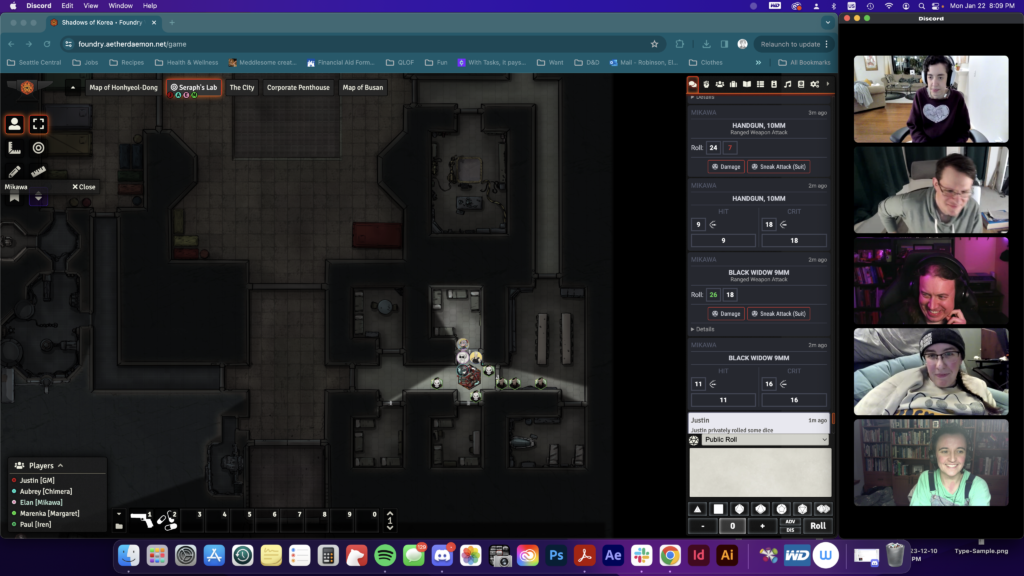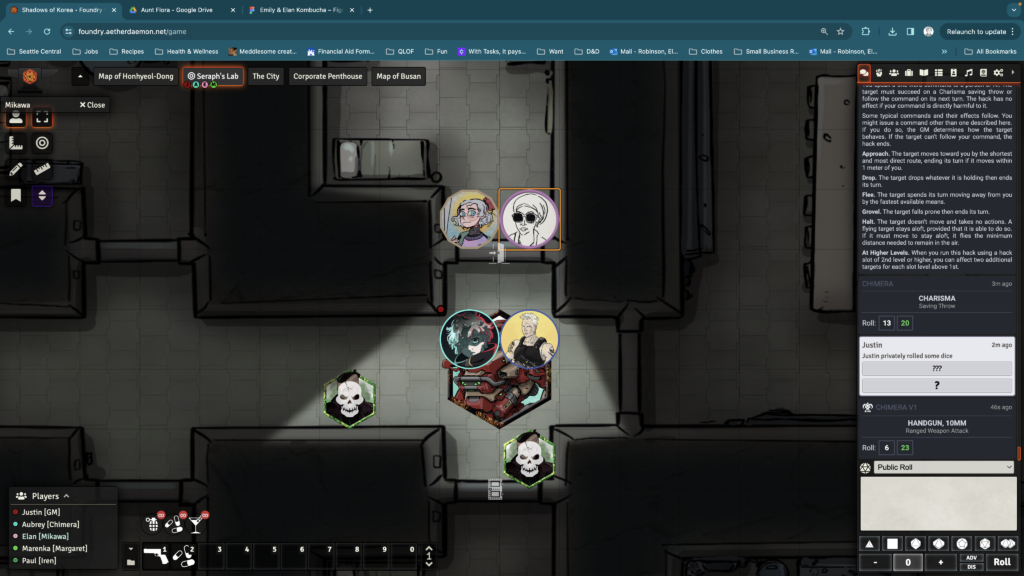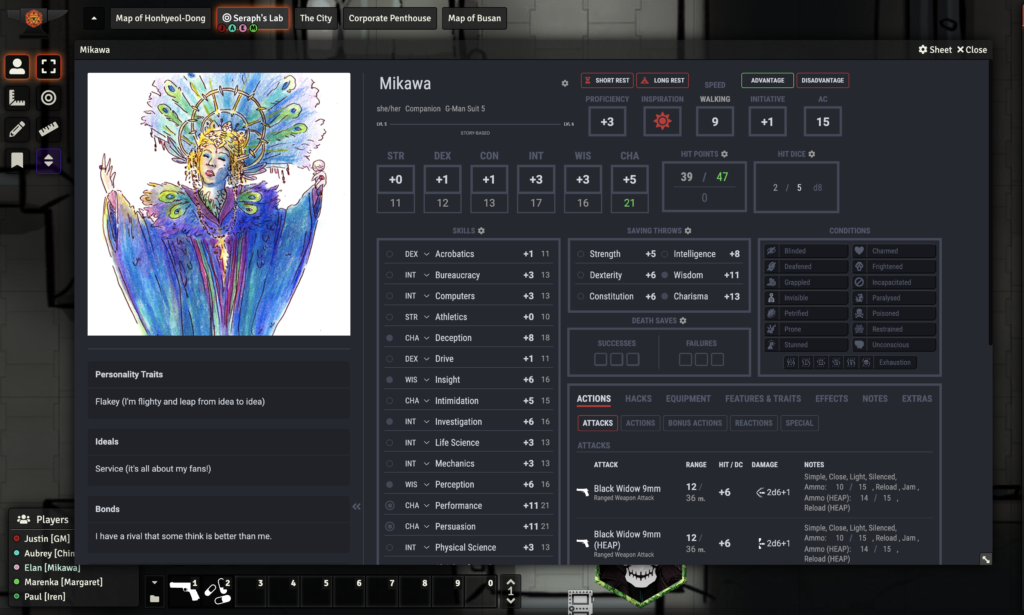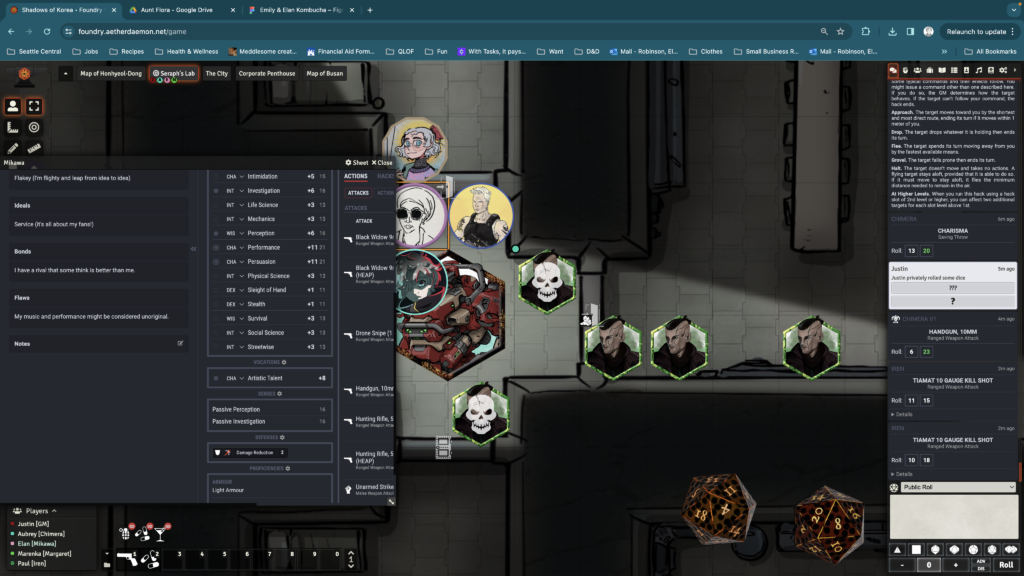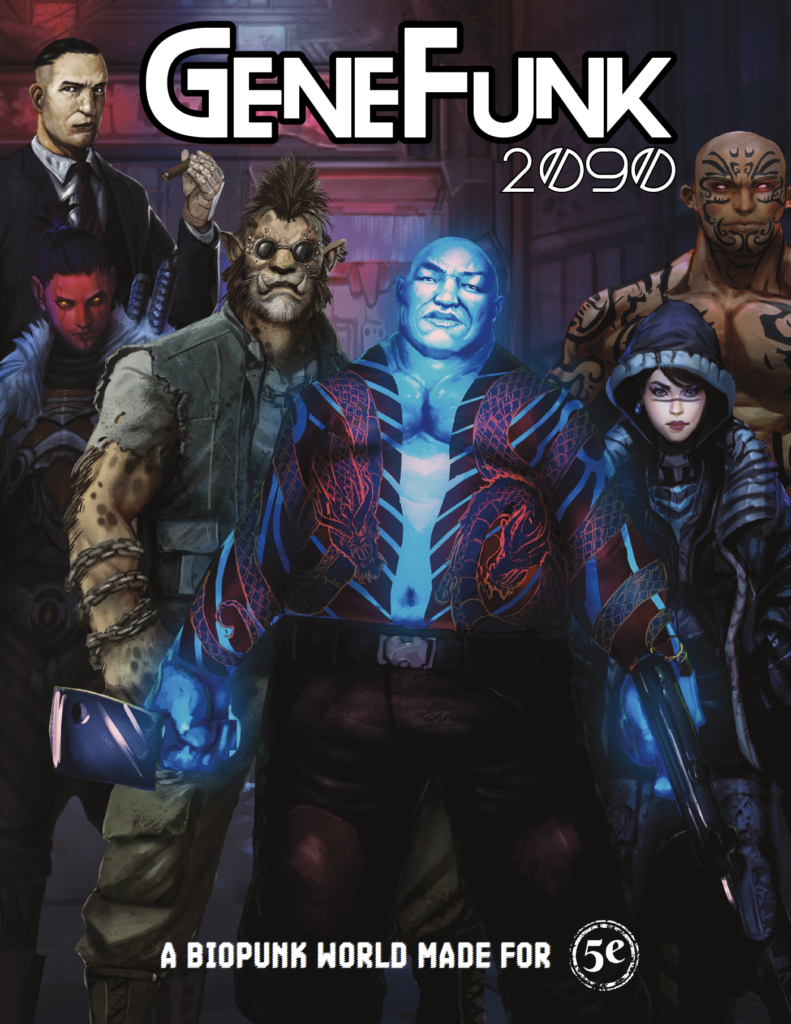
This week I played Genefunk 2090, a tabletop roleplaying game that uses Dungeons & Dragons 5e as a base, but adds new mechanics, character types, and a dystopian cyberpunk setting where most people have AI brain implants and corporations literally rule the world (and have even begun tweaking the human genome to create people with physical attributes that meet their business needs). I have been playing this game with the same group of people once a week for about four years now.
How the game is played
As with other forms of D&D, the game begins with players creating characters based on parameters from the core rulebook. My character, Mikawa, is an aging former pop star who was genetically engineered and raised by her record label to be a charismatic performer. My three fellow players also have characters who are members of the same mercenary cadre. The final member of our group is the Dungeon Master (DM). When we play, his role is to narrate the scenes and scenarios our characters encounter, act as all of the non-player characters and arbitrate the rules as we interact with the world he builds for us.
Dungeons & Dragons has been around for decades now, and its rules have been through many iterations, but the fundamental method of play is still pretty similar. The DM narrates scenes, and the players, acting as their characters, narrate their actions within the scene. When an action involves skill or an element of chance, the DM and players roll dice to determine the outcome. Combat is a key element, but diplomacy, puzzle-solving, and creativity can also help players progress the game. Because the stories and worlds players navigate are elaborate, it’s not uncommon for one “campaign” or story arc to last many sessions.
Traditionally D&D is played in-person with physical rulebooks and dice, but online platforms have made it possible to play online as well. Our group plays online using a combination of Discord (for video call and chat) and Foundry, an online tabletop game platform with a lot of customization options. In Foundry, our DM uploads maps and music, and we as players can create our own character tokens that we use to move around the map. All of the important information we need to play (like statistics for our characters, items we can acquire, and information we have learned about our allies and enemies) is stored in the game and easy to access from the icon menu. We can even select and customize our digital dice—admittedly not quite as fun as collecting unique physical dice, but still a nice touch.
What makes our Genefunk 2090 game unique is largely the setting (Busan, South Korea in the year 2090 instead of the vaguely-historical fantasy setting of the D&D universe), but there are some mechanics that differ from traditional D&D as well. For example, damage in combat is higher across the board to account for the prevalence of guns as a weapon (guns usually don’t exist in D&D), which raises the stakes and forces players to think differently about how they behave in fights. Overall, though, if you’ve played D&D 5e before, Genefunk is not a huge adjustment.
Who is the ideal target audience?
This game is definitely designed for players with at least some recent Dungeons & Dragons experience, since it is essentially an extension of those rules (which are already numerous). It also narrows that pool further with its subject matter, because while traditional D&D can appeal to kids (my 10-year-old neighbor plays multiple times a week with different groups!), the Genefunk 2090 setting is decidedly dark, gritty, and adult. I would say that this game is designed for people who enjoy tabletop games like D&D and who have played enough D&D that they’re a little bored and ready for something new.
What you enjoyed about your experience (or didn’t enjoy)
My favorite aspects of Genefunk 2090 are group storytelling and the social connection. I really love how D&D and other tabletop roleplaying games encourage creativity, from character creation to problem-solving. I am personally not very good at improvisation (especially not on a Monday night at 9pm), but I always love watching and listening to my fellow players embodying their characters. Our DM is also incredibly creative, and although some of the scenarios and the overall setting came from a book, he elaborates a lot with his own ideas—and by weaving our characters’ backstories into the ongoing storylines. Because he is a programmer and is very tech-savvy, he also makes a lot of modifications to the way the online play works. For example, our characters were recently in a nightclub setting, and the custom map we used included features like moving colored lights and music that changes volume depending on how close your character token is to the stage. I appreciate Foundry allows so much customization and freedom; it really makes for a rich play experience that could be adapted to many different groups, settings, and games.
Something I don’t always enjoy about this game (which I felt this week) is the huge volume of rules and how challenging they can be to reference. I personally have a very hard time memorizing so many rules, and it can feel embarrassing and frustrating when, for example, we’re in an exciting combat scene and I have to pause to ask for help remembering how to do something. D&D 5e rules are fortunately usually pretty easy to find online with a simple Google search, but when it comes to the specifics of the Genefunk 2090 setting I have to refer to a PDF version of the setting rulebook, which is a big file that often lags during a Control + F search and doesn’t read that easily on a desktop/laptop screen. A physical rulebook was produced when the game was released, but it was a Kickstarter project that only had one print run so those physical books are hard to come by. Fortunately my fellow players are very knowledgeable when it comes to the rules of the game and never seem to hold it against me when I have to ask the same question for the 9th week in a row, but I could see the sheer volume of rules and preparation needed to play any version of D&D being a barrier to a new player.
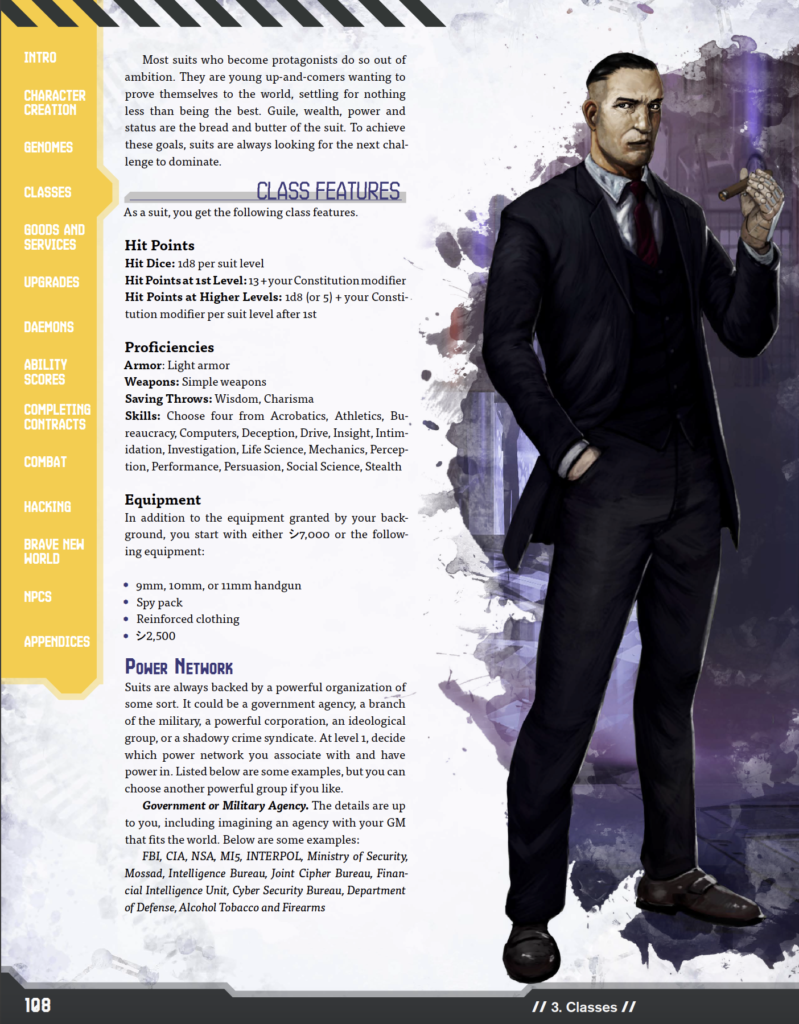
Despite these challenges, I really love playing this game, and I look forward to it every week. When I started with this group of people I only knew one of them, but now we’re all friends who attend each other’s birthday parties and keep up on one another’s lives. In our busy adult existences, I feel really lucky that our group has managed to stay together for this long, and that we continue to make time for this activity every single week.
